One of the first pandemic shows I watched in its entirety was The Imagineering Story on Disney+. I’ve always been interested in the Imagineers, theme park immersion, and exactly what makes places like Walt Disney World, Epcot, Hollywood Studios and Animal Kingdom unparalleled experiences of imagination-fueled creativity.
There were a multitude of little nuggets of inspiration sprinkled throughout the episodes for the creative-minded, but for me perhaps none more resonant than that which appeared in Episode 3, Disney’s Four Levels of Detail as explained by Disney Design Imagineer Coulter Winn. On his first day at Imagineering, was asked by the now-legendary John Hench, if he knew these four levels. They are, in his words as told in the episode:
Detail Level One: You’re out in the countryside, you’re looking over the trees and you see the church steeple.
Detail Level Two: You’ve walked into town, you’ve just come to Main Street. You can see the parkway, the median strip, the trees, the benches.
Detail Level Three: You’re standing on the sidewalk and now you’re looking at a fine house. You can see the color, the texture, the materials, the scale, the architectural style.
Detail Level Four: You’ve actually gone up to the front door and you’ve grabbed the door knocker and you’re knocking on the door, feeling the temperature of the metal and the texture of the metal, whether or not it’s been deformed, if there’s paint on it, if the paint is slightly chipped.
Winn ended with Hench’s takeaway:
“Here at Imagineering we always have to get to detail level four because we have to immerse our guests in our stories and make them so believable that the door knocker has to be completely real.”
That less-than-60-seconds out of six, hour-long episodes captured my attention immediately. I knew I wanted to write about how these levels of detail can relate not only to fantasy worldbuilding and imaginative realism, but specifically to some of the places we visit in the world of Magic: the Gathering. I began thinking about this nearly two years ago, but now that we are fully immersed in Kamigawa: Neon Dynasty, it’s finally time for a fully fleshed out article and application to this new setting.
This is Kamigawa 4D.
Disney Detail Level One
“You’re out in the countryside, you’re looking over the trees and you see the church steeple.”
This is the thousand foot view of the world, and in Magic, that will almost always mean lands, from Basic to Legendary. If you’re a regular reader of mine you know I have spoken about the storytelling superiority of basic lands for years, and this article puts that theory into practice. We’ll start with on of the title images of the set, Boseiju, Who Endures by Chris Ostrowski:
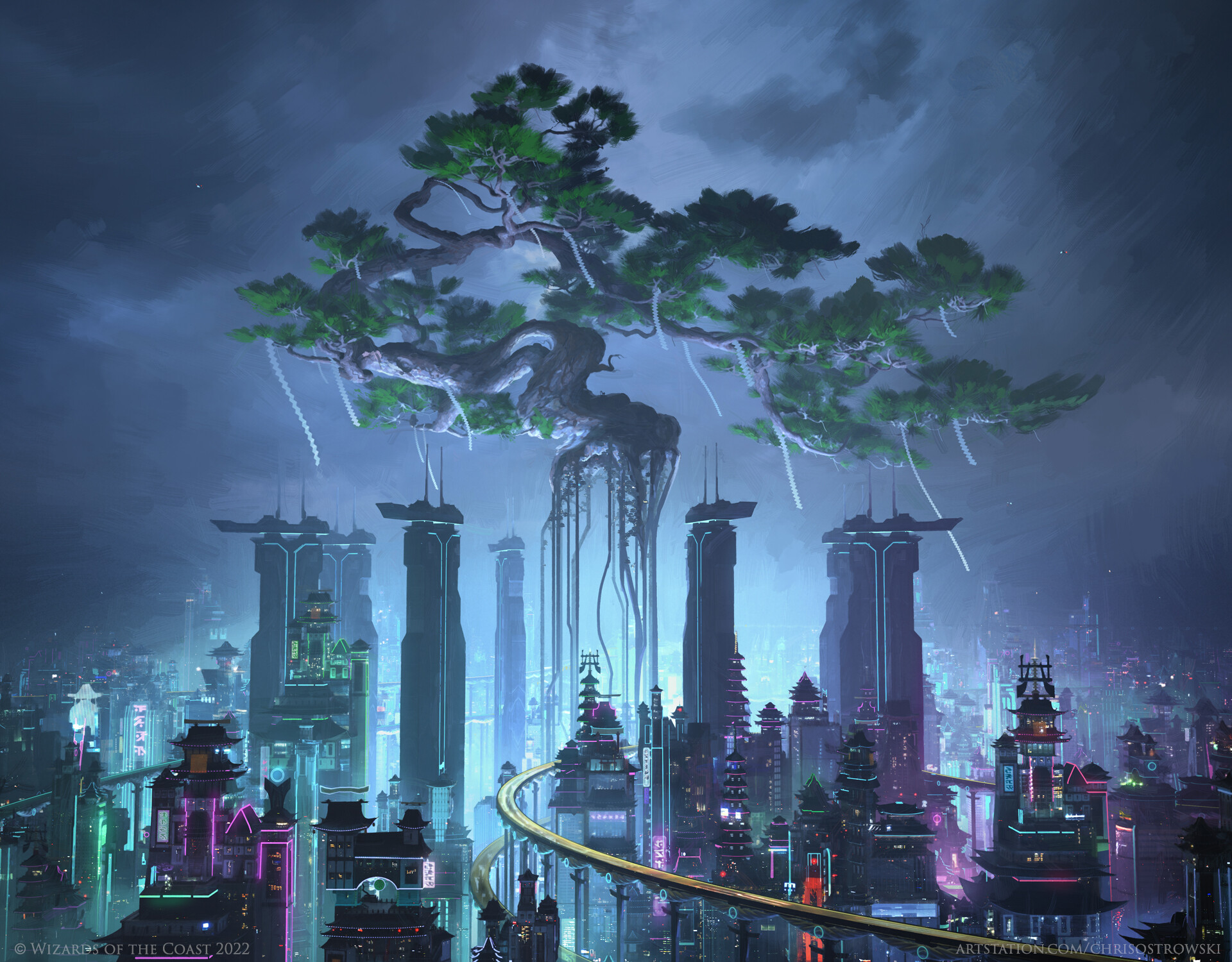
Boseiju, Who Endures by Chris Ostrowski. Digital.
This image encapsulates this entire set into one artwork. Boseiju, the oldest and tallest tree of the Jukai Forest, is now the living remnant of the old world Kamigawa within the new metropolis. It tells us we’ve been here before, but not quite like this.
But Kamigawa, even now, is not all a city. There are still many places that remain the Kamigawa of old, full of history, and full of memory.
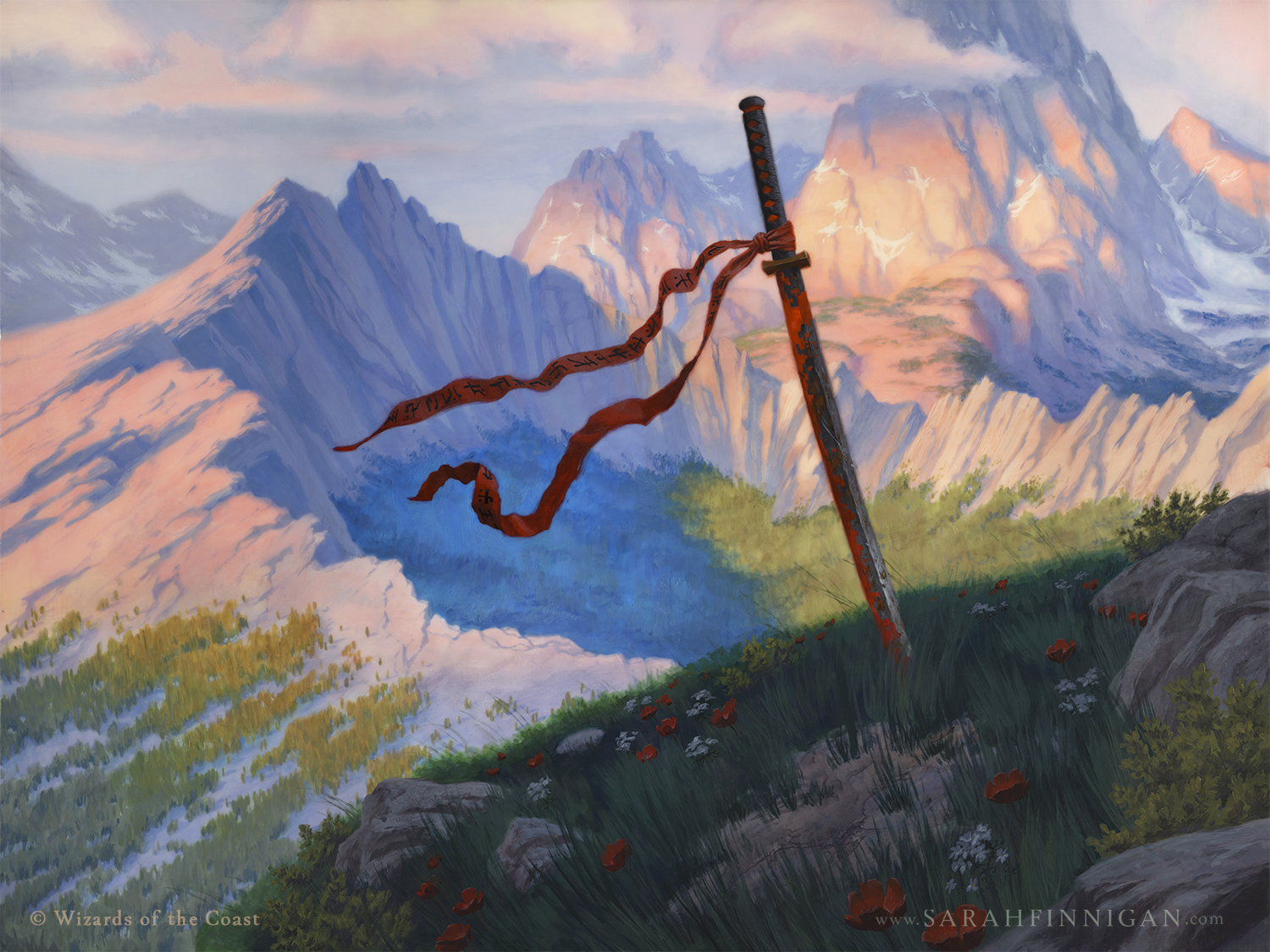
Mossfire Valley by Sarah Finnigan, acrylic on wood, 18” x 24”
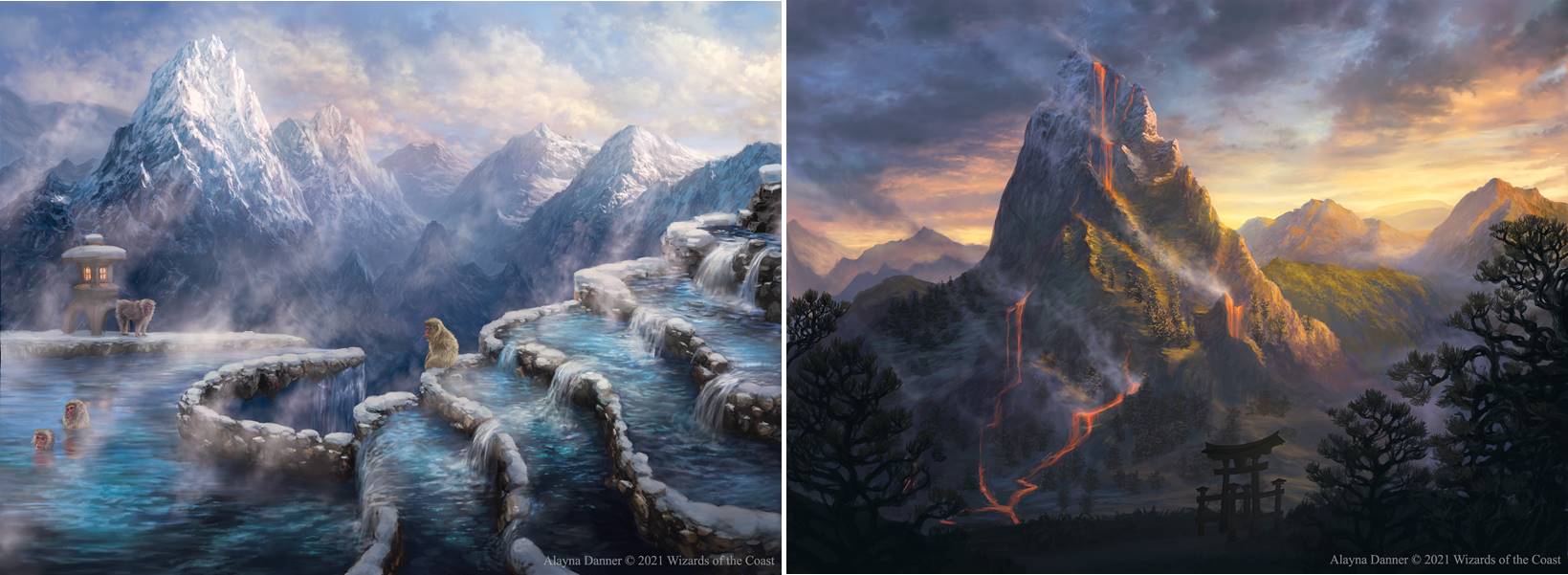
Swiftwater Cliffs/ Rugged Highlands by Alayna Danner. Digital.
This is what we see across the countryside and over hills and plains, dotted with details recognizable as Kamigawa, but with many stories yet to be told. We’ll have to get closer, go deeper, and explore further.
We’ll end with one of the basic land cycles, these by Piotr Dura. These lands are that welcoming party; they lead us into this new world by way of the old, and ushering in the Neon Dynasty of Kamigawa. They’re familiar and yet they begin to highlight the changes of a thousand years of progress. And ultimately they set the stage for the next level of detail.
Disney Detail Level Two
“You’ve walked into town, you’ve just come to Main Street. You can see the parkway, the median strip, the trees, the benches.”
We draw closer with each level, but lands still very much tell the story in the second as we get closer to our final destination. We begin where we left off, with the other cycle of basic lands, these by Adam Paquette.
Instead of looking upon landscape from well in the distance, or slowly approaching the unknown, we’re now right outside recognizable locations. Where before we perhaps saw the silhouette of a courtyard in the distance, we’re now standing within one.
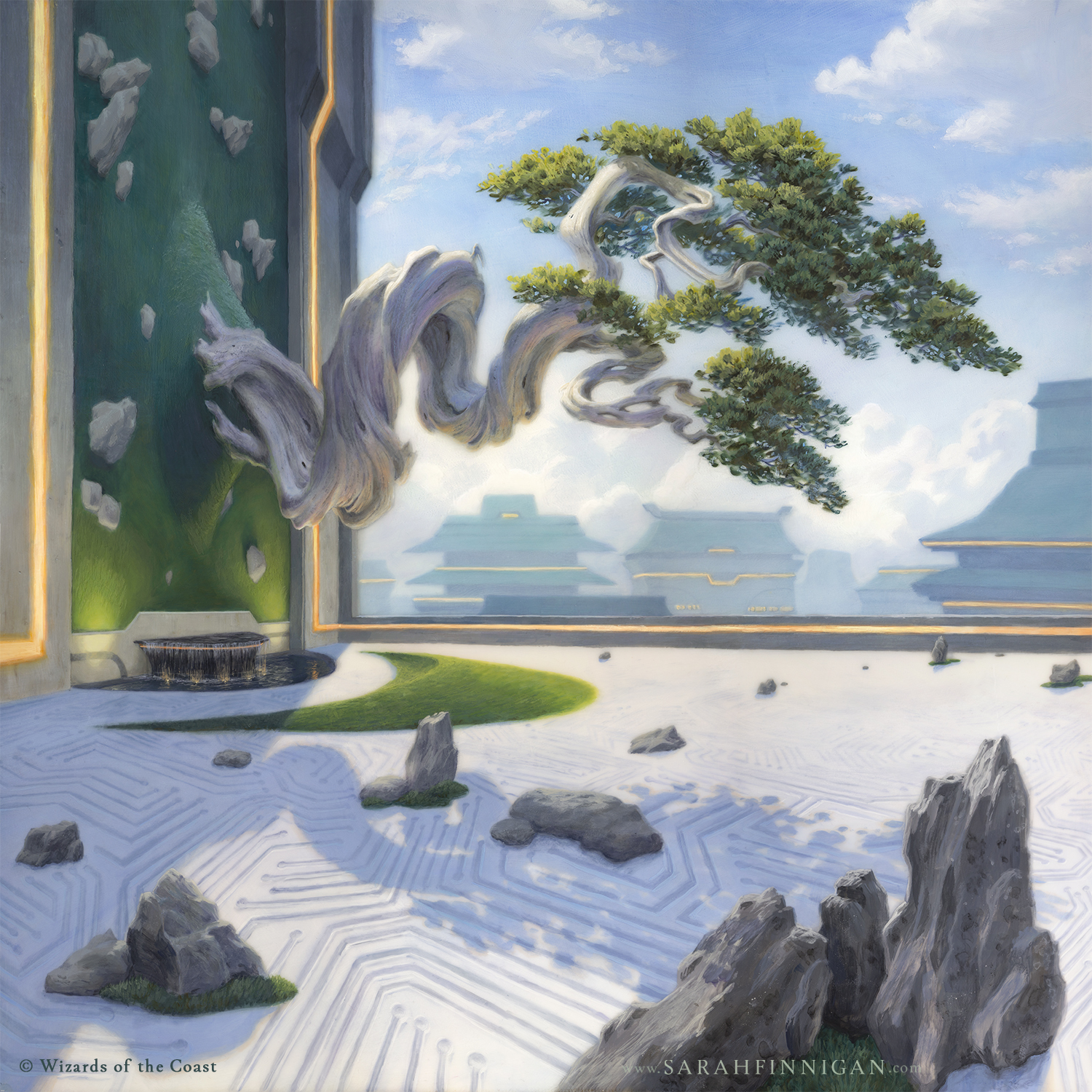
Blossoming Sands by Sarah Finnigan, acrylic on wood, 18” x 18”
Bridges and pathways that dotted the terrain are now in full view, and hangers and structures are fully open to us, and have more discernible detail and style. They’re unique to Kamigawa, and have aesthetic purposes in delineating exactly what this world is, and who lives here.
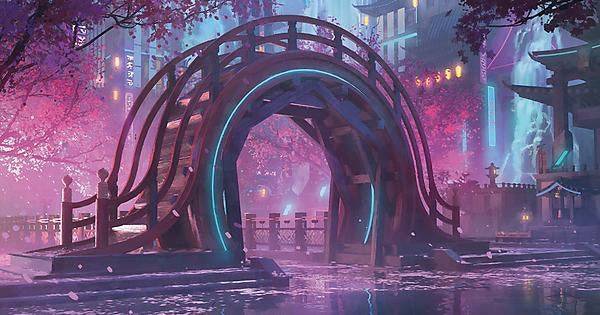
Dismal Backwater by Chris Ostrowski. Digital.
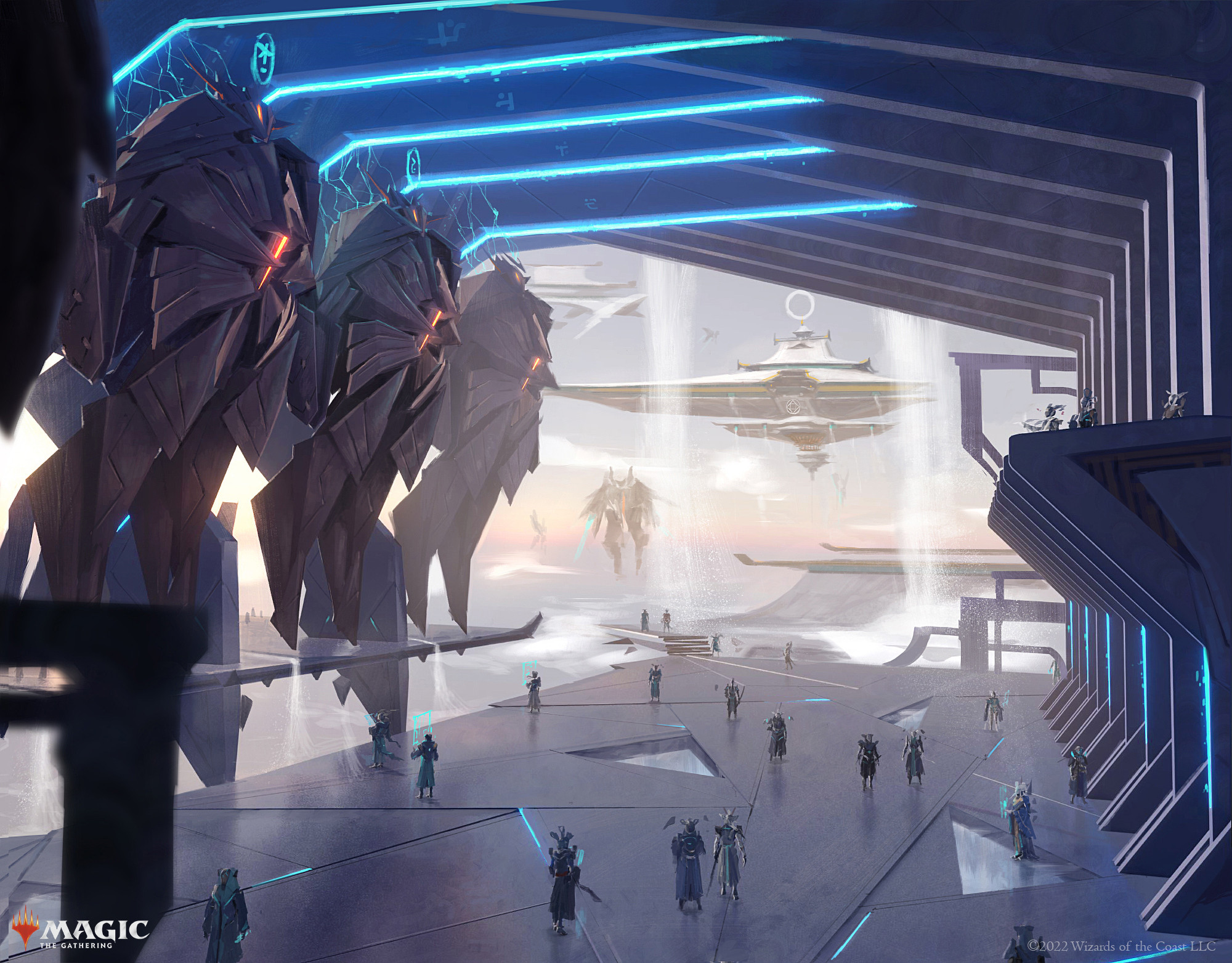
Mech Hanger by Julian Kok Joon Wen. Digital.
So while we’re still technically far away, these artworks pull us in closer, and let us as the viewer feel as if we’re approaching something bigger.
Disney Detail Level Three
“You’re standing on the sidewalk and now you’re looking at a fine house. You can see the color, the texture, the materials, the scale, the architectural style.”
This is the street level, again one step closer, where we’re now invited to commune with Kamigawa society and see all the comings and goings of its places and people. We’ll begin again still at a distance, but not exactly as before. Here we are much closer, and we observe the past, present, and future all at once in my favorite work of the entire set, Discover the Impossible by Ryan Pancoast.
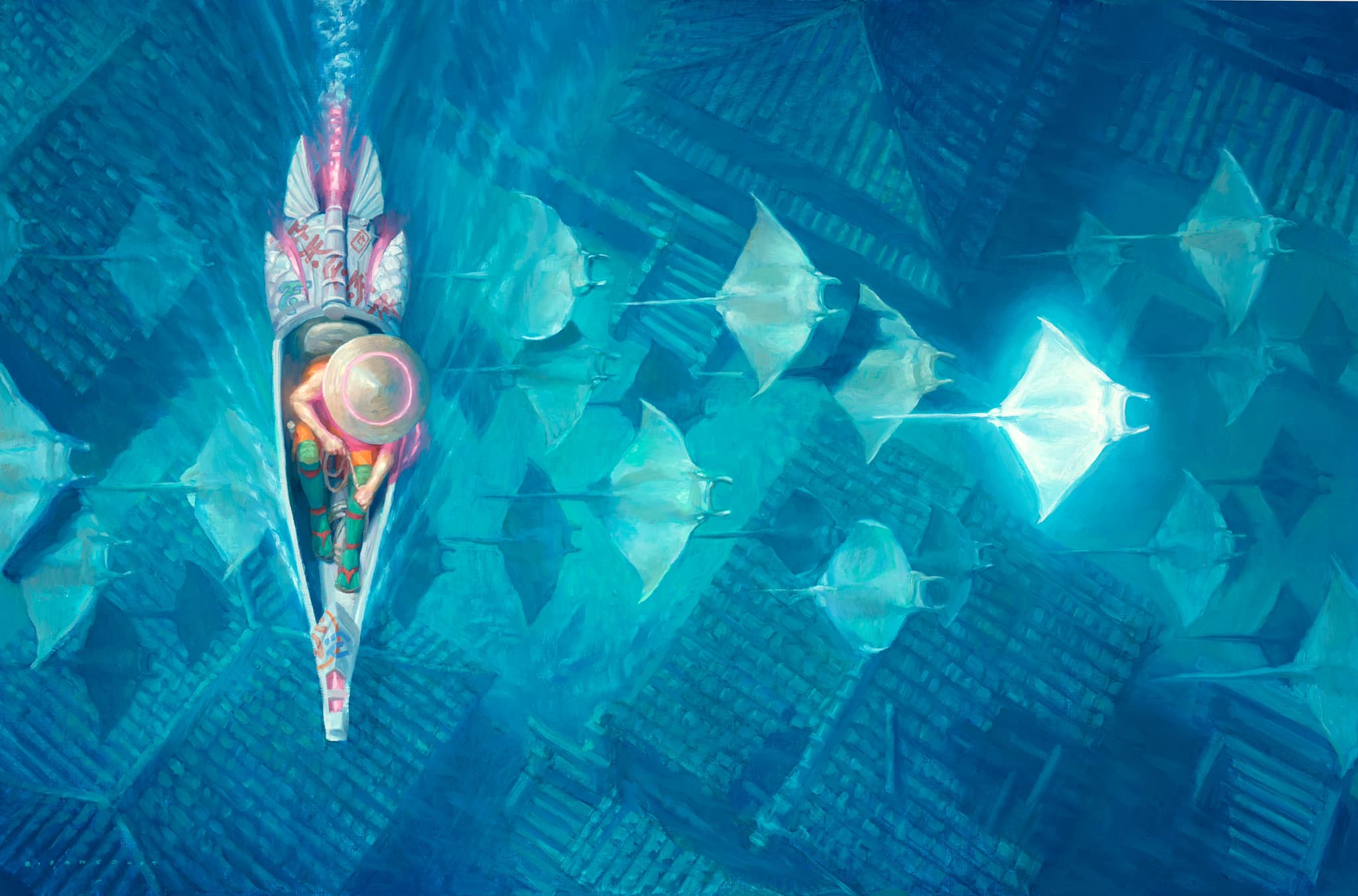
Discover the Impossible by Ryan Pancoast, oil on canvas 20” x 30”
Below, the sunken city of Kamigawa’s past. On the surface, a look at everyday life in this new age. And looking even closer at the motorized, koi-aesthetic boat, the blend of technology and tradition that earmarks this entire setting.
As we step back on dry land and into the city, Kamigawa’s third level of detail is perhaps best captured by Donato Giancola. From the snowy steps of Sokenzan, where the battle-forged Asari stand:
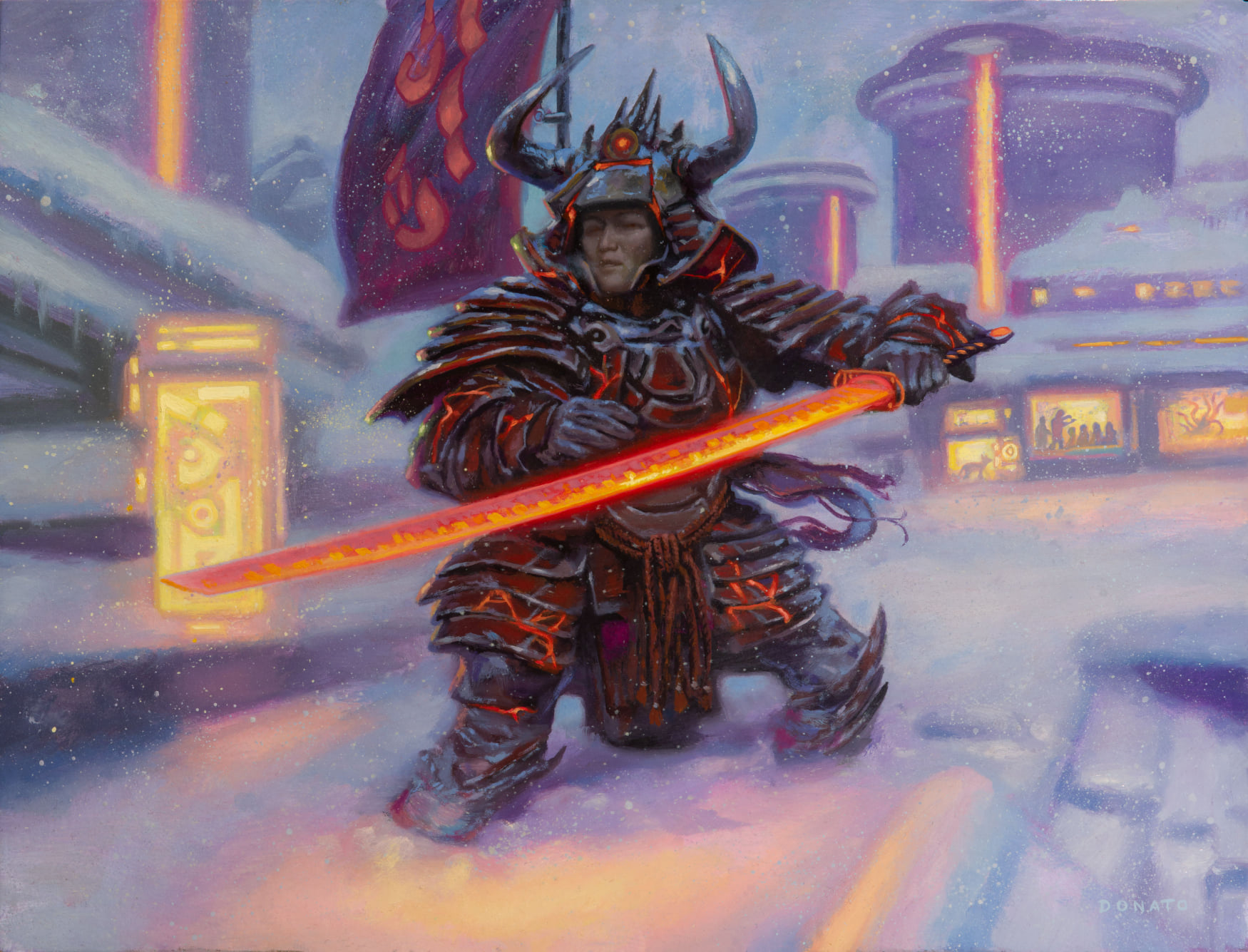
Asari Captain by Donato Giancola, oil on panel, 13” x 17”
To the bustling streets beneath Boseiju, and all who travel there, man, woman or otherwise.
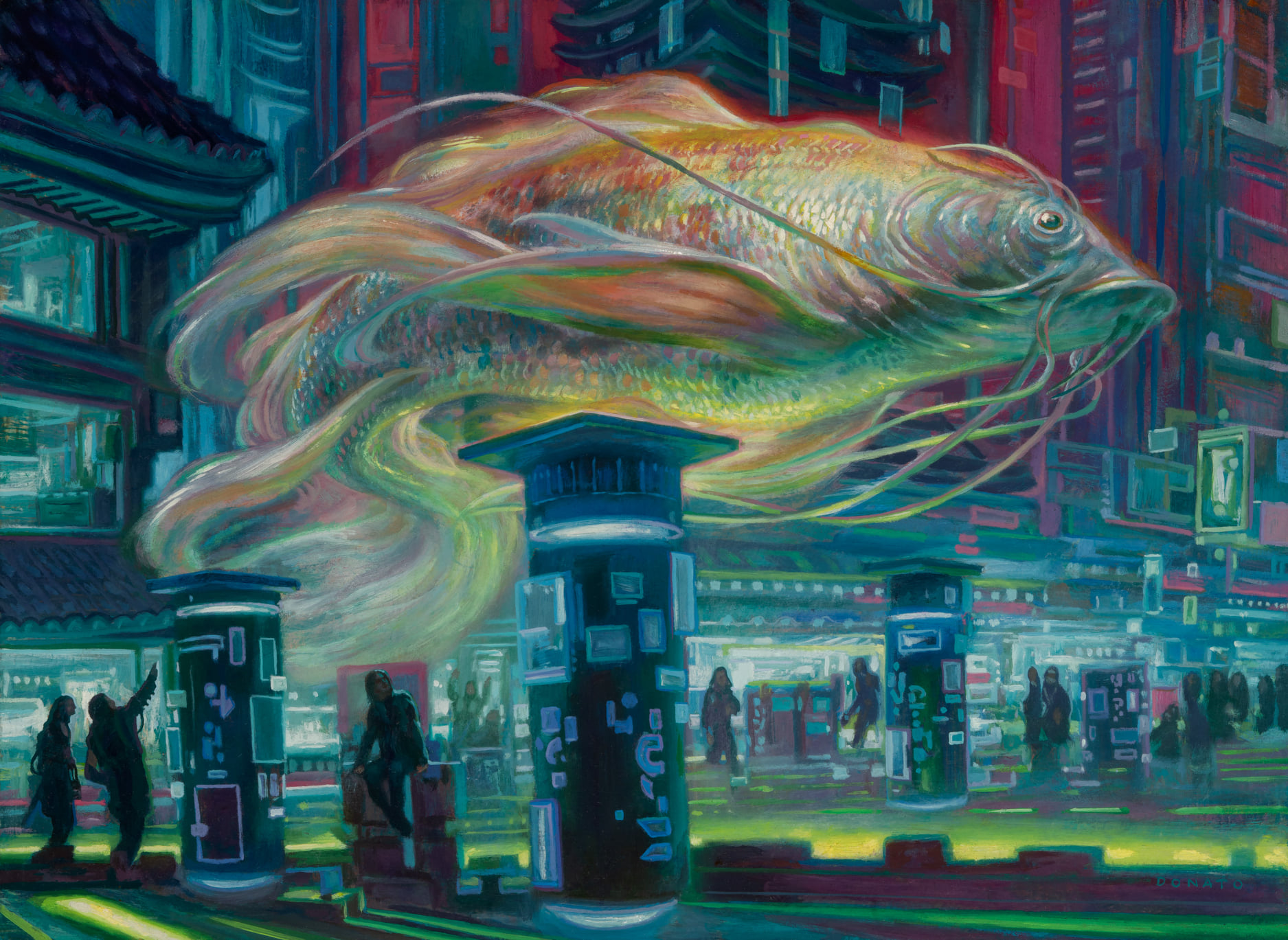
Skyswimmer Koi by Donato Giancola, oil on panel, 14” x 19.25″
If we look closely we can see posters and flyers, billboards and signs, and folks finding their way through the futuristic concrete jungle. We can even see inside some of the windows. And what do we find there?
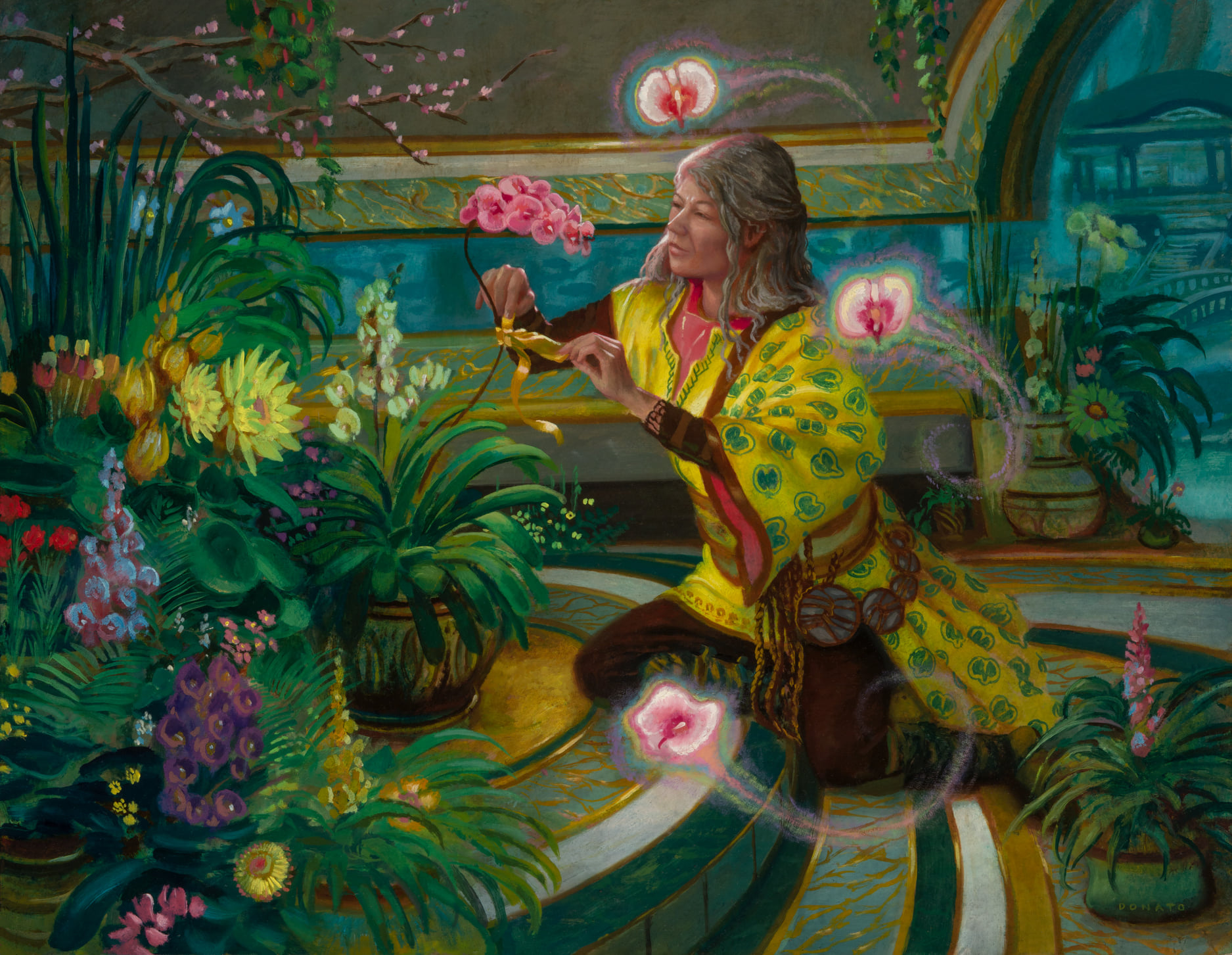
Jukai Preserver by Donato Giancola, oil on panel, 14” x 18”
An artisan at work; she is the living embodiment of the dichotomy between the moss of the Jukai Forest and the metropolis that has enveloped it. To work to this level of worldbuilding is an incredible feat of art direction and forethought, and in these three paintings Donato has managed to capture the everyday life of Kamigawa across the entirety of the plane. These are scenes and settings we can relate to, and construct our own narrative from our own past experiences.
We’ve almost reached the end of our journey, there is but one level left to go.
Disney Detail Level Four
“You’ve actually gone up to the front door and you’ve grabbed the door knocker and you’re knocking on the door, feeling the temperature of the metal and the texture of the metal, whether or not it’s been deformed, if there’s paint on it, if the paint is slightly chipped.”
These are the works that make Kamigawa a real place for the senses: texture, temperature, and irregularities and the uniqueness that makes it unlike any other place. It’s the carpet in Saito’s Dream, and it’s here the Saga cards finally come into play as they tell the story of Kamigawa old and new. From thousand year old smooth and cool fragmented stone:
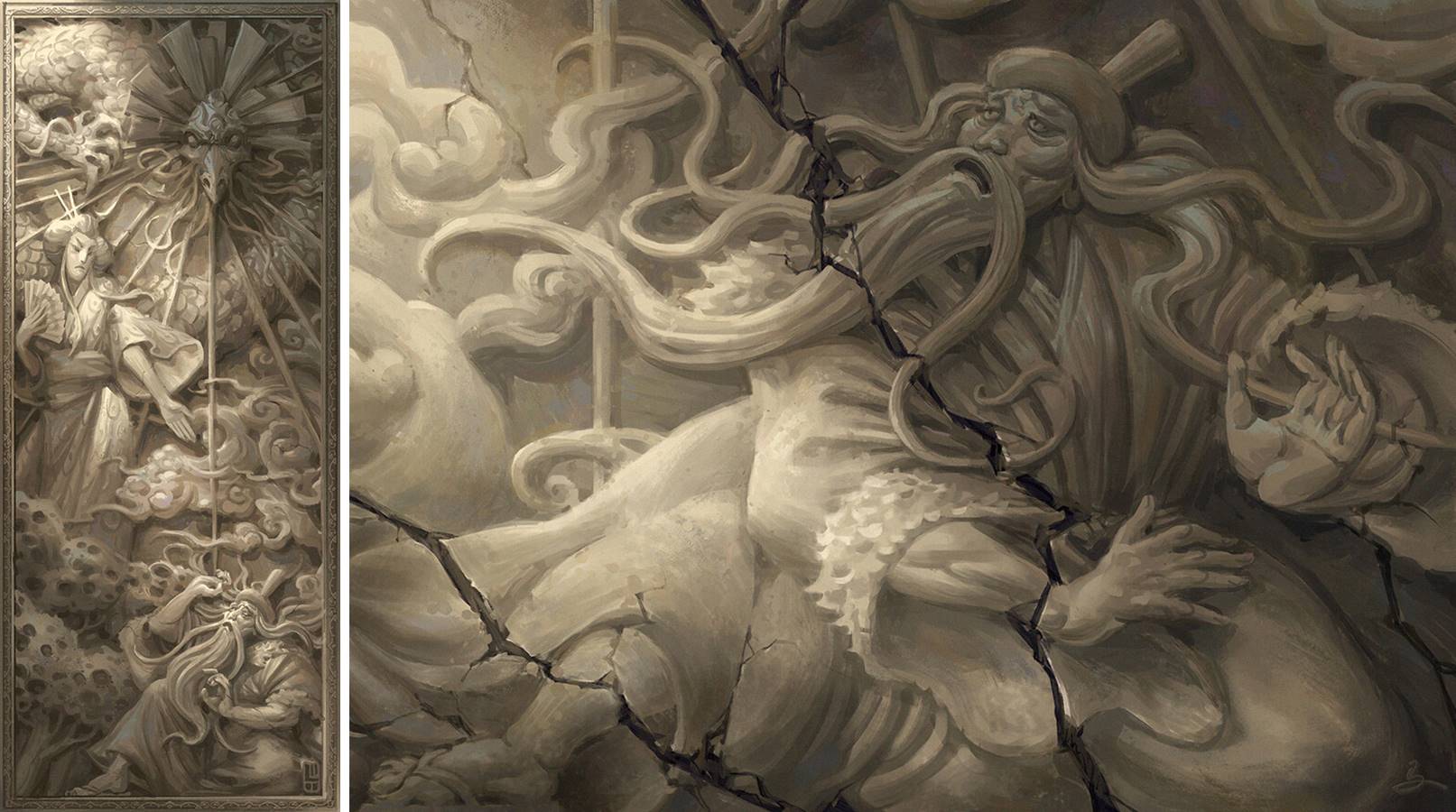
The Fall of Lord Konda / Fragment of Konda by Andrew Mar. Digital.
To the steam rising from a hot tea atop the stories of the ancestors:
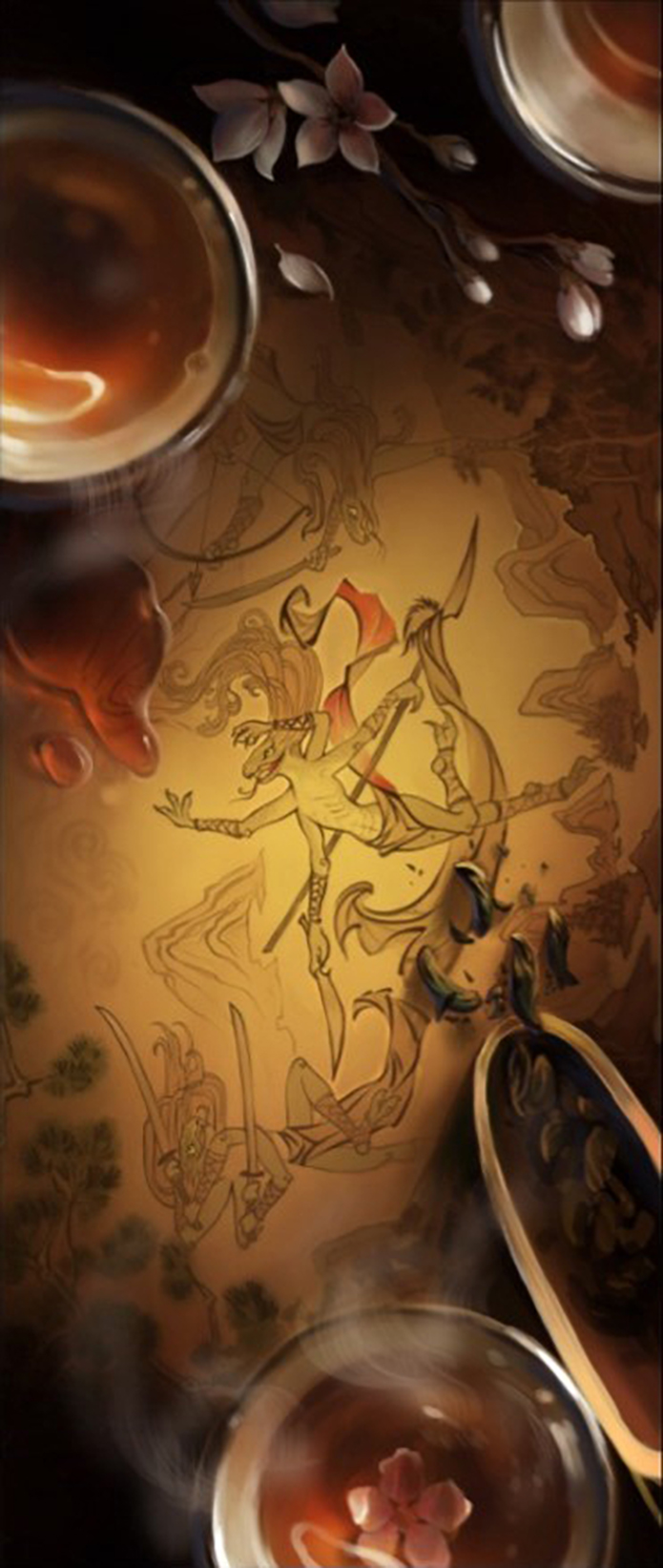
Tales of Master Seshiro by Olena Richards. Digital.
To leather and neon so rendered you can feel it and smell it:
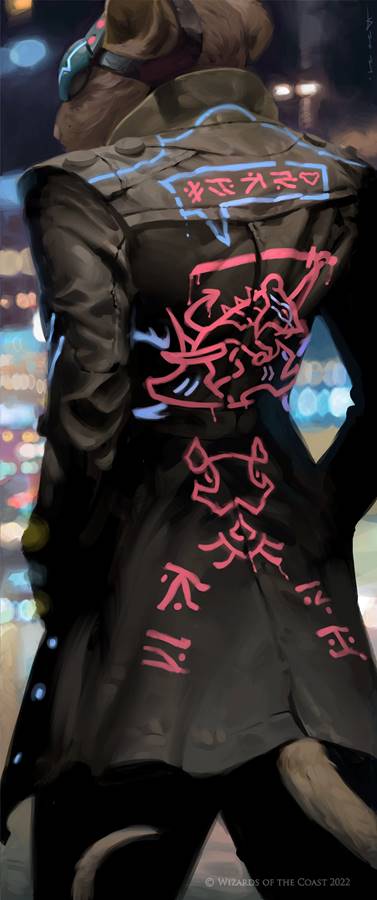
Okiba Reckoner Raid by Victor Adame Minguez. Digital.
It’s the splatter of neoned graffiti and paint that one could only find on Kamigawa, so bright we need shield our eyes.
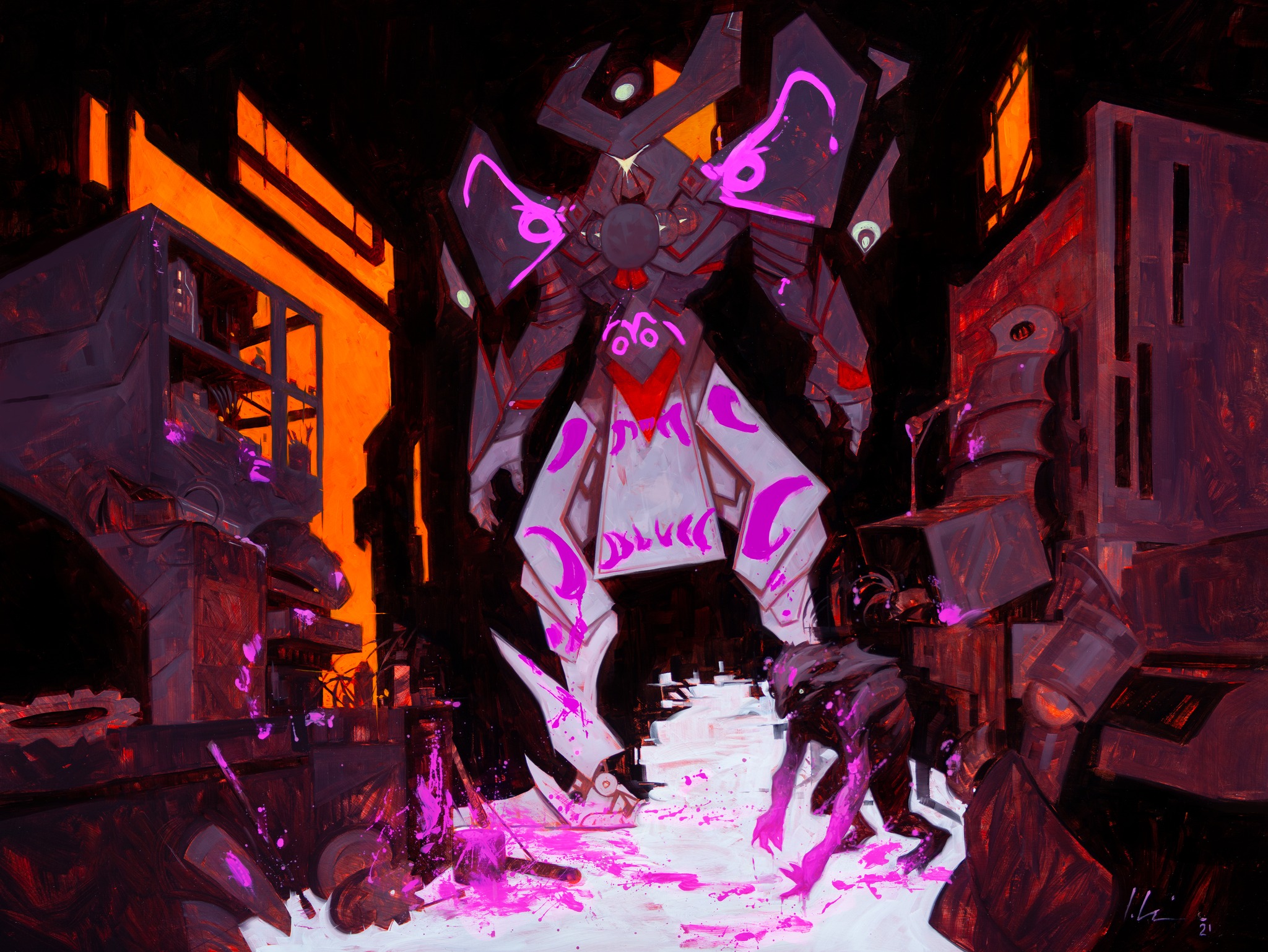
Akki War Paint by Jeremy Wilson, oil on panel, 20” x 24”
To the hyperrealistic Reality Chip at the center of the story, so real it appears if we could reach out and grab hold, maybe before it grabs hold of us.
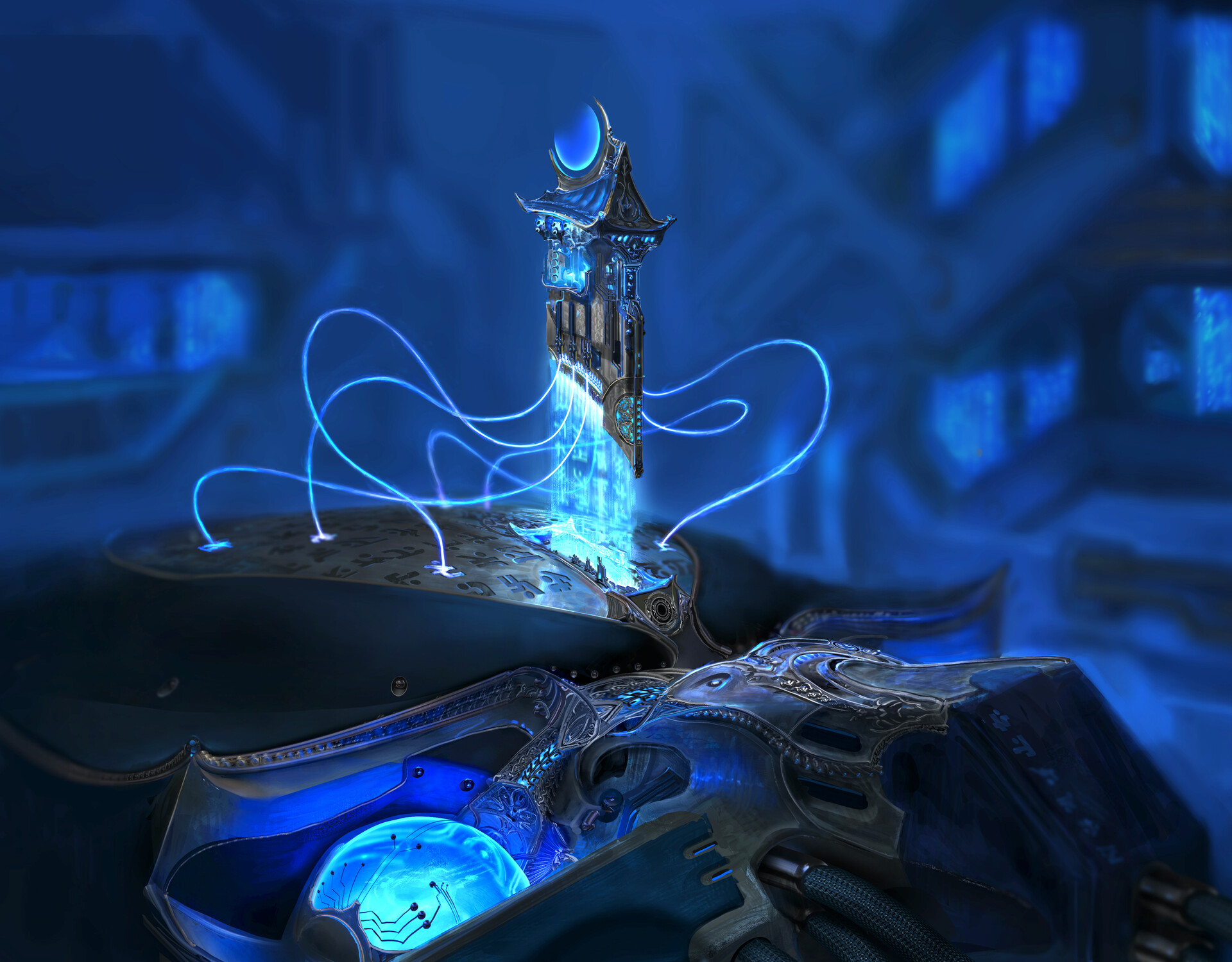
The Reality Chip by Campbell White. Digital.
As you can see there is no singular definition of the fourth level of detail—while the most specific group of art by definition, perhaps also the most expansive. It’s those works most expressive and sensory-inducing, from the simplest of scenes to storytelling sagas, but those that drive home the details that turn fantasy into reality.
Wrapping Up
I hope you enjoyed this exploration into some of the finer aesthetic details of Kamigawa: Neon Dynasty. This is an absolutely artistically brilliant set, and was the perfect point of departure for this new lens of looking at Magic: the Gathering artwork. The four levels of detail changed my way of looking at thematic worldbuilding; these artworks we’ve worked through are just some of the illustrations that create the richness of this setting, and are very much the pillars of what makes this recent set so special.
The “4D” subseries is something I’d like to do whenever we visit a new world in the Magic: the Gathering multiverse, so you can expect the train to stop next in New Capenna in just a few short weeks.
Looking ahead to next month, I have a brand new collaboration in the works with one of the legends of the Vorthos community, as well as our first dip into New Capenna as cards are released throughout the month. I’ll be mostly offline during the month of May, but rest assured I’ll have your regular dose of Mirror Gallery goodness already scheduled and ready to go. I don’t want y’all to miss me too much.
Remember, to see original #mtgart and other #vorthos related things, follow me on Twitter. Feel free to ask questions or retweet to continue the conversation. Thanks and see you next time!
Donny Caltrider has been playing Magic since 2002 and collecting original Magic art since 2017. He has an M.A. in Museum Studies from Johns Hopkins University and enjoys telling stories about art, objects, and the intersection of fantasy with real-life. You can find him on Twitter talking about #mtgart, museums, and other #vorthos related goodness. Follow along and continue the conversation!

